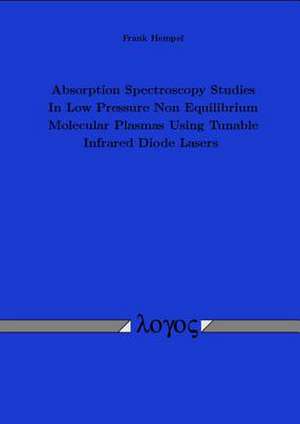Absorption Spectroscopy Studies in Low Pressure Non Equilibrium Molecular Plasmas Using Tunable Infrared Diode Lasers
en Limba Engleză Paperback
Preț: 439.27 lei
Nou
Puncte Express: 659
Preț estimativ în valută:
84.07€ • 86.84$ • 69.96£
84.07€ • 86.84$ • 69.96£
Indisponibil temporar
Doresc să fiu notificat când acest titlu va fi disponibil:
Se trimite...
Preluare comenzi: 021 569.72.76
